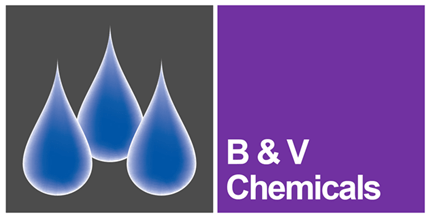White rust is the corrosion of zinc or zinc coated (galvanised) surfaces. A large percentage of cooling towers and evaporative condensers are constructed from galvanised steel. The galvanised surfaces may be painted or left exposed. A high proportion of evaporative condenser tubes are galvanised.
In this blog post, we look at the use of galvanised steel, the effect of water quality, and recommended guidelines and treatment.
Why use galvanised steel?
Galvanising is normally applied as a sacrificial coating that is expected to slowly dissolve creating a protective potential for any exposed areas of steel. The thickness of zinc applied is normally determined by the designed life expectancy of the plant and the aggressiveness of the environment to which the plant will be exposed. That is the zinc coating has a designed life expectancy.
However, in cooling systems and particularly for evaporative condenser tubes the manufacturers expect the zinc to protect the underlying steel by acting as a barrier. Loss of the zinc coating is unfortunately often seen as a fault in the water treatment programme.
What is the effect of water quality on galvanised steel?
The solubility of the zinc coating depends on the composition of the water with which it is in contact. Cooling waters can vary widely in composition from very soft natural waters and base exchange softened waters to very hard scaling type waters.
The most important natural components of the system water are the hardness and alkalinity. The presence of hardness reduces the aggression of the water to the zinc. The alkalinity determines the pH that in turn determines the stability of zinc surface. Below pH 8.2 the zinc forms stable salts that offer protection. Above pH 8.2 the zinc forms white voluminous and weakly structured zinc salts that are easily removed and therefore unable to offer any significant protection.
The hardness can be controlled to minimise the dissolution of zinc. Unfortunately, except for a few very low alkalinity waters the natural pH will rise to above pH 8.2.
What guidelines do cooling tower manufacturers offer?
Cooling tower manufacturers offer guidelines (limitations) to the composition of the water used in their towers. It is important to refer to the cooling tower manufacturers guidelines regarding optimal water quality. In general they suggest conditions to passivate the zinc surface initially and maintenance conditions to minimise zinc loss. Passivation at regular intervals is considered a necessity if the normal conditions take the pH above pH 8.3. Some of these conditions are very difficult to achieve and potentially unachievable in some areas of the UK, therefore in some cases a compromise has to be made.
The low pH requirements for the passivation procedure and preferred for the maintenance programme can only be achieved by running a tower at low cycles of concentration, by the use of an acidic treatment or by separate acid dosing. There are of course economic restraints on the cycles of concentration, but remember the economic benefits are greatly reduced when the cycles exceed three cycles. The dosing of strong acids to small systems is not easy and potentially very damaging without the use of sophisticated control equipment.
What is the proposed treatment for galvanised cooling towers?
B & V Chemicals propose a combination of restricted cycles of concentration and the use of an appropriate corrosion/scale inhibitor.
The water treatment regime for minimising the corrosion of galvanising will depend on the composition of the make-up water.
Scaling systems waters (>400 ppm hardness)
White rust is less of a problem in hard waters even though the natural pH of these waters will generally be high. A thin layer of scale effectively protects the zinc. It is not practical to carry out a passivation procedure that restricts pH. A short period with a low treatment reserve will lay down a suitable thin layer of scale. These types of waters should be treated with Envirohib 300.
Intermediate system waters (150 – 400 ppm hardness)
These are less predictable waters with respect to white rust formation. The pH will generally be above pH 8.2 and there is less hardness to inhibit the white rust. Again, a passivation procedure is not really very practical. We would recommend the use of Envirohib 200, or adjust system cycles to allow an alternative treatment regime.
Soft system waters (30 – 150ppm hardness)
We would recommend the use of Envirohib 100. Control cycles to restrict pH. Running at low cycles to maintain a pH of less than 8.2 should passivate new towers.
Systems running on base exchanged softened waters
Softened waters are the most aggressive to galvanised surfaces because of the lack of hardness and the high system pH’s. The blending of towns mains with the softened makeup to give 40 – 60ppm hardness in the system is advised.
The following passivation procedure for new cooling towers should be used:
- Set the bleed to give a low cycle of concentration (< 2X).
- Dose 300 ppm of Envirohib 600.
- Monitor the pH.
- The preferred pH is in the range 7.5 – 8.0. If necessary, adjust bleed to reduce the pH or increase the dose of Envirohib 600 if economically acceptable. Running at low temperature will also reduce the pH due to the increased solubility of carbon dioxide.
- Maintain this regime if economically acceptable for 4 weeks. The bleed can then be reduced and the Envirohib 600 dose rate reduced to 100 – 150ppm. The amount of town’s mains being blended in will also need to be adjusted. The system hardness should be maintained in the range 40 –60ppm.
The passivation procedure should be repeated following each chlorination. Note Envirohib 600 is an acid product therefore it must be dosed carefully so as not to come in direct contact with plant components. Care should be taken with systems that run intermittently. Envirohib 600 should not be dosed when the system is on standby.
RO, DI, or condensate make up
These are very aggressive to galvanised surfaces. Each case must be surveyed and programmed individually.
Explore our water treatment chemicals here. We are of course happy to offer any support and guidance you may need, please get in touch via the website or by emailing us directly at ownlabel@bvwater.co.uk


.jpg)

